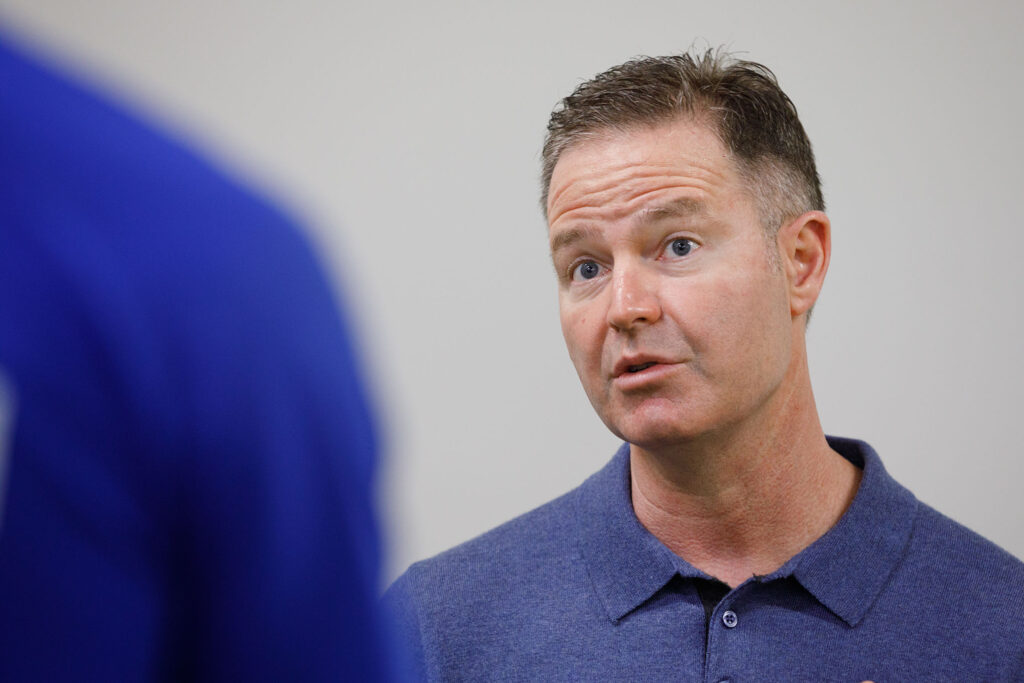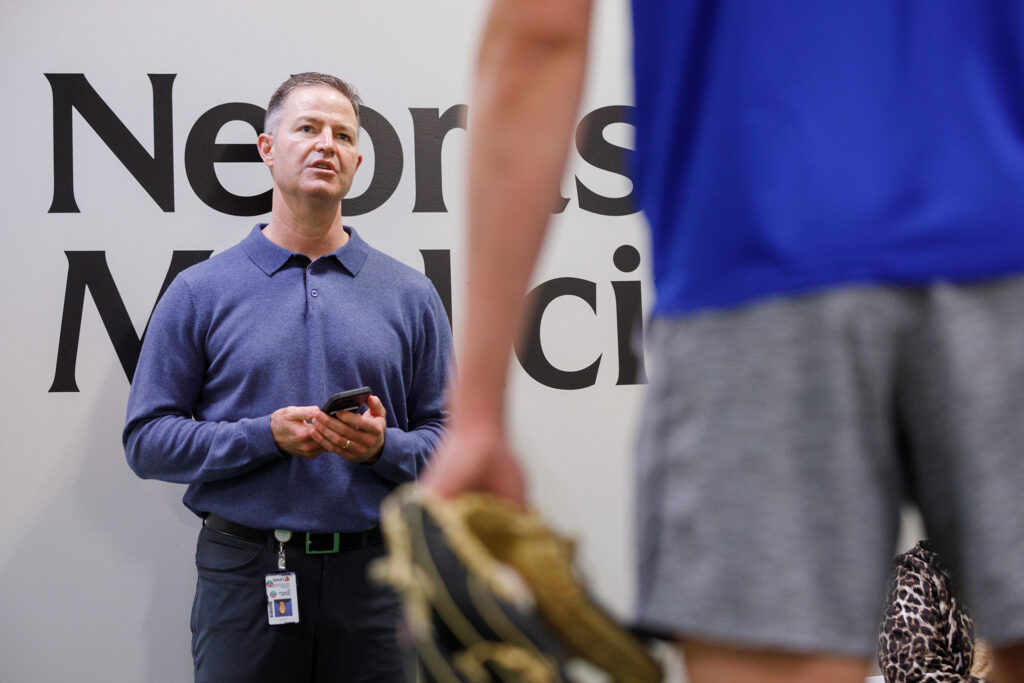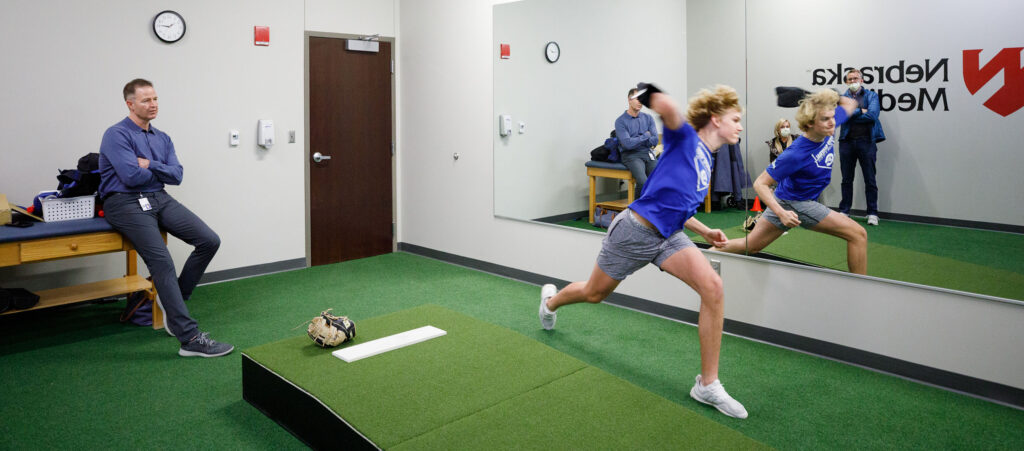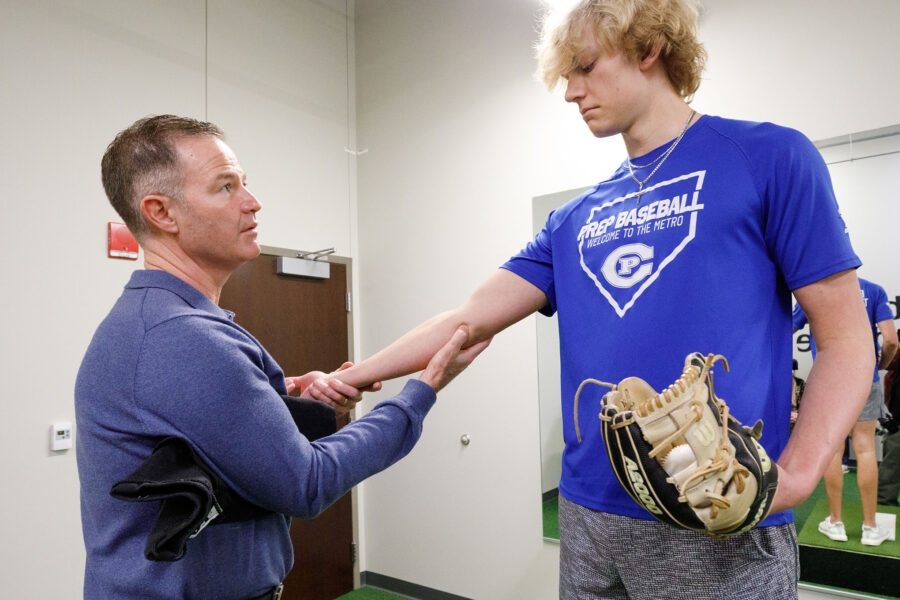Ed Fehringer, MD, has thought about the problem of baseball pitchers with arm pain ever since he was a baseball pitcher thinking about his arm pain. “Eddie” used to lie awake at 15, hoping if he gritted his teeth hard enough, maybe he could be a baseball player just a little bit longer.
He wasn’t in denial. Not about the pain, and especially not about what it meant in the bigger picture.
If he wanted to keep going, he had to keep going.
That meant he couldn’t tell anyone. He applied the Icy Hot in secret and kept his thoughts about arm pain to himself.
“When you talk about arm pain with baseball pitchers,” he said recently, “you enter a strange realm of fear and folklore that conditions you to keep your mouth shut.”
He’s Dr. Fehringer now and 40-something years later still thinking about pitchers and arm pain. He’s probably thought more about it from more angles than just about anyone. He’s looked at the problem as a player, as a father with a son who has pitched from youth ball into high school, as a youth coach in charge of a dozen kids at a time and, yes, as a physician. Dr. Fehringer is a professor of shoulder and elbow surgery at UNMC.
He’s made the study of baseball arm pain part of his clinical research.

Every year, he sees more and more young baseball players in the operating room. If you know someone who plays or follows baseball seriously, they likely know a young player who has undergone ulnar collateral ligament (UCL) reconstruction, or, as it is commonly known, Tommy John surgery.
Dr. Fehringer said there’s been “an astonishing rise” in Tommy John surgeries among young people in recent years. It gnaws at him.
Dr. Fehringer’s goal is to have fewer of these surgeries performed. He wants young baseball players on the mound and out of the operating room.
“It doesn’t have to be this way,” he said.
(“Tommy John” UCL repair is the only elbow surgery Dr. Fehringer doesn’t perform. With his research on throwing arm pain, “Over the last eight years, I’ve felt it better to keep myself not conflicted,” he said.)
What if we kept young players playing through personalized treatment plans, making an adjustment here or there? What if the signal of arm pain meant not a prescription of shutting down or a prescription for surgery, but for one of a slight change in body motion? What if you could do the rehab before the serious injury?
He thinks he can help make these surgeries less commonplace.
He believes this goal is in sight because he’s looked at the problem from so many perspectives.
He doesn’t have one single “aha” answer. In fact, one of the things he has discovered through his research is that there is no one-size-fits-all answer.
But he has collected an incredible amount of information.
Something the medical community often understands that the baseball world sometimes less often does is that pain itself is information.

As a former young pitcher himself, Dr. Fehringer knows why players rarely share this information, because one result of admitting your arm hurts is being scratched from the lineup.
And players already on the bubble, like young Eddie Fehringer, are very aware that not playing can lead to not playing.
So much of our relationship with sports is emotional and complicated. (Think of all the ups and downs you go through every football Saturday.) Our relationship with sports when our own kids are involved can be even more complicated and a lot more emotional.
Even parents, like him, who want to keep their kids safe, also worry about their kids losing their shot.
And so, young players often take calculated risks about what information to share and when. Until it’s too late. And then there’s another Tommy John surgery, another damaged UCL.
That’s how we often deal with baseball arm pain, Dr. Fehringer said. With two extremes. With rest on one side or with surgery on the other.
But his decades of thinking about the problem, from every perspective, have taught him that there are possibilities in the middle.
If you study anatomy. If you understand baseball-specific movement. If you are a surgeon who also can converse comfortably with players and coaches on using a wind-up vs. a slide step.
If you cultivate an environment in which players feel safe enough to be honest about their information, their pain.
If you could explore what that pain meant for one pitcher, as opposed to another.
When Dr. Fehringer sees his arm-pain patients in clinic, the clinic often includes a pitcher’s mound.
Dr. Fehringer consults with pitchers and their parents in a motion lab on the UNMC-Nebraska Medicine Omaha campus.

It is both clinical care and clinical research. Dr. Fehringer has published in the Orthopaedic Journal of Sports Medicine and published a self-published book on his journey of discovery.
He’s working on a hypothesis.
“A treatment program can be devised that is unique to you,” Dr. Fehringer said. “Which it should be, if it is going to be effective.”
A pitching workout as personalized medicine.
Very personalized medicine.
“There is no one-size-fits-all solution to pain,” he said. “Just as there is no one-size-fits-all way to pitch.”
Throwing a baseball, he said, is not an arm movement or a shoulder movement. It is an all-body process, “a chain reaction from back foot to fingertips, every link important and interacting with others.” An adjustment to any link in the chain could potentially add velocity or lead to injury. And each player’s chain is his own.
One wrong link, and “You’re asking those joints to do something they are not designed to do,” Dr. Fehringer said.
Young pitchers, and even Major League Baseball pitchers, are often kept on “pitch counts.” But perhaps the problem is less about how many times you do something than how many times you do something wrong.
Dr. Fehringer works with these pitchers on minimizing this risk.
“My years as a surgeon have taught me that well-intentioned advice may end up being counterproductive,” he said.
For example, “Keep your elbow up.”
Not always.
Every pitcher is unique, he said, and must find movement that fits his particular body type and temperament.
Every pitcher’s pain might have a different meaning or a totally different cause.
Dr. Fehringer has thought a lot about this over the decades. He knows there are 15-year-olds today, lying awake at night with aching arms thinking about it too.
He hopes to help them find a way to keep going that doesn’t involve gritting until something gives.
He continues his clinical research, working with his pitcher/patients, still thinking about the problem from all angles. Former pitcher, concerned dad, youth coach, surgeon-scientist.
But these days he’s not just thinking about pitchers with arm pain; now he’s talking about it. In hopes that he can share some of what he has learned. In hope that a player admitting his arm hurts might become the beginning of a conversation, instead of the end.

Great article, Kalani. And kudos to Dr. Ferhinger for diving into this much-needed research and work.
Thank you!
Super story, Kalani. Let’s hope Dr. Fehringer can make a breakthrough. I think these select teams are placing too much stress on young arms – too many games, and the kids can’t handle it.
I agree Tom. Too many clustered outings without time to recover. It’s microtrauma each time. More than can pitch and more focus on the kids, not championships. But there’s a lot to unpack there!
Dr ED. great article You hid your arm pain quite well when you were 15.
congrats on all of your work and expertise in your practice. Your old friends from Columbus are proud of you.
Don H and family.
Thanks Don. I didn’t want to sit!:)
As a former pt of yours AND a former UNMC CRNA (now retired) who had the pleasure of doing cases with you, its good to read about you and the path you are on. Keep up the good work! I’ll seek you out for an autograph of your book…..look forward to reading it! Jeff Daubach